
Welcome to Hyperion Records, a British classical label devoted to presenting high-quality recordings of music of all styles and from all periods from the twelfth century to the twenty-first.
Hyperion offers both CDs, and downloads in a number of formats. The site is also available in several languages.
Please use the dropdown buttons to set your preferred options, or use the checkbox to accept the defaults.

| Emmanuel Despax (piano), Orpheus Sinfonia, Thomas Carroll (conductor)» More |
| Benjamin Grosvenor (piano), Royal Liverpool Philharmonic Orchestra, James Judd (conductor)» More |
| Jeanne-Marie Darré (piano), Orchestre des Concerts Colonne, Paul Paray (conductor)» More |
| Arthur de Greef (piano), New Symphony Orchestra, Sir Landon Ronald (conductor)» More |
from notes by Phillip Borg-Wheeler © 2001
extrait des notes rédigées par Phillip Borg-Wheeler © 2001
Français: Josée Bégaud
aus dem Begleittext von Phillip Borg-Wheeler © 2001
Deutsch: Anne Steeb/Bernd Müller
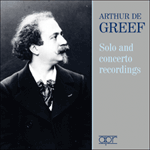 Arthur de Greef - Solo and concerto recordings Arthur de Greef - Solo and concerto recordingsBelgian pianist Arthur de Greef studied with Franz Liszt and also became a close friend of Grieg, who strongly admired his playing. He was a mainstay of the HMV catalogue in the 1920s and this set brings together for the first time his complete re ...» More |
 French School pianists play French Concertos French School pianists play French ConcertosThis set brings together twelve French-trained pianists performing thirteen French works for piano and orchestra of which ten are premiere recordings. Most of the performers knew the composers and worked with them and four works are performed by t ...» More |
 Rhapsody in blue - Benjamin Grosvenor plays Saint-Saëns, Ravel & Gershwin Rhapsody in blue - Benjamin Grosvenor plays Saint-Saëns, Ravel & GershwinFamed for his poetic sound and brilliantly clear touch, Benjamin Grosvenor’s debut concerto recording combines Gershwin’s 'Rhapsody in blue' (the original 1924 jazz band version) with the sparkle and wit of Ravel and Saint-Saëns, creating a progra ...» More |
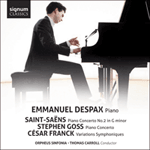 Saint-Saëns, Goss & Franck: Piano Concertos Saint-Saëns, Goss & Franck: Piano ConcertosEmmanuel Despax is a rising star on the UK and international piano scene; this debut concerto recording features the premiere recording of Stephen Goss’s Piano Concerto, Saint-Saëns’ ever-popular Piano Concerto No 2 and Franck’s Variations symphon ...» More |
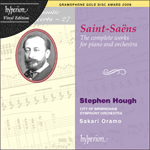 Saint-Saëns: The complete works for piano and orchestra - Vinyl Edition Saint-Saëns: The complete works for piano and orchestra - Vinyl EditionWhen first issued in 2001, this set from Stephen Hough and the CBSO promptly garnered for these artists a second Gramophone Recording of the Year Award, for these are performances which combine all the elegance required for the Frenchman’s music w ...» More |
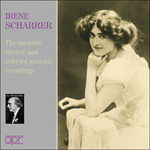 Irene Scharrer - The complete electric and selected acoustic recordings Irene Scharrer - The complete electric and selected acoustic recordings‘If [Irene Scharrer]'s remembered from her recordings it’s really only the one, and that was ironically the last she made, Litolff’s Scherzo from the ...» More |
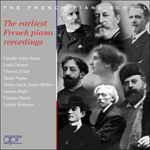 The earliest French piano recordings The earliest French piano recordingsThis set brings together some of the earliest and rarest piano recordings ever made, not just in France, but worldwide, and includes the complete solo recordings of all the pianists featured except Wurmser. The French office of the Gramophone Comp ...» More |
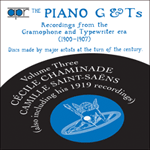 The Piano G & Ts, Vol. 3 - Chaminade & Saint-Saëns The Piano G & Ts, Vol. 3 - Chaminade & Saint-Saëns |

